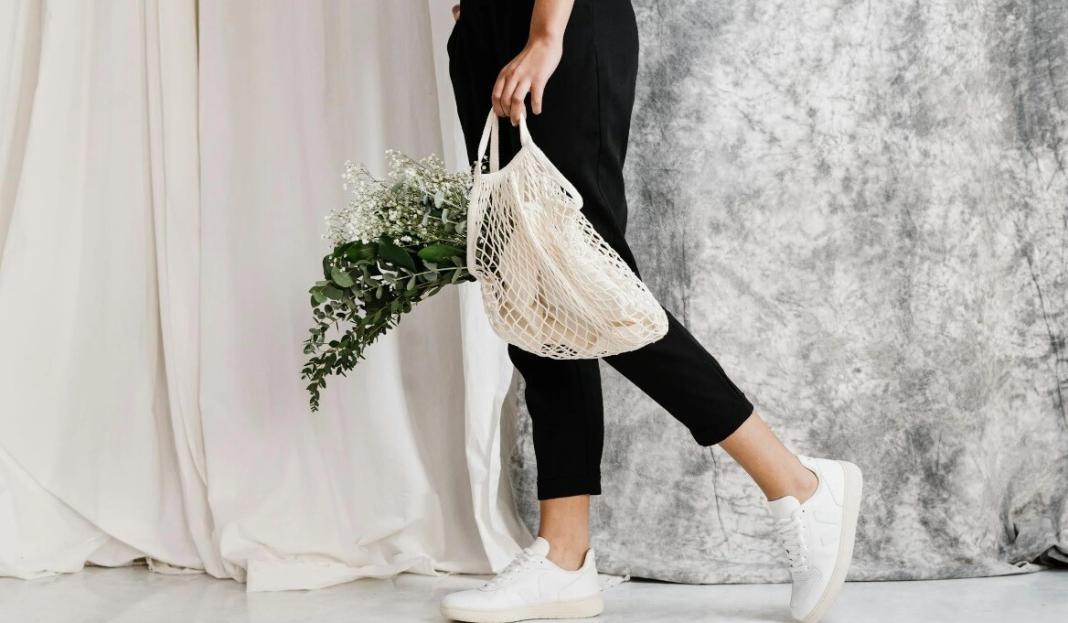In today’s consumer-driven society, the allure of fast fashion is undeniable. But as our closets continue to overflow with cheap, disposable clothing, it’s essential to pause and consider the true cost of our fashion choices. The truth is, the fashion industry operates on a model of overconsumption and waste, perpetuating a cycle of environmental degradation and social injustice. However, there’s a growing movement towards sustainable fashion, and this article is your roadmap to joining the revolution. Whether you’re a trendsetter or a conscious consumer, we’ll show you how to embrace sustainable style and make a positive impact on the planet and its people.
Welcome, fashionistas and eco-conscious trendsetters! Are you ready to revolutionize your wardrobe and make a statement that goes beyond style? In this blog post, we’re diving into the world of zero waste fashion—unveiling sustainable style tips and eco-friendly practices to help you build a wardrobe that’s as stylish as it is sustainable. Whether you’re a fashion enthusiast looking to reduce your environmental footprint or simply curious about ethical fashion alternatives, join us as we explore how to embrace zero waste fashion and make a positive impact on the planet, one outfit at a time.
| Metric | Statistics and Findings | Source |
|---|---|---|
| Global Textile Waste | Annually, 92 million tonnes of textile waste are generated globally, with 87% of fibers used in clothing ending up incinerated or in landfills. | UNEP (UNEP – UN Environment Programme) |
| Waste Per Person | In the United States, each person discards approximately 81 pounds (37 kg) of clothing per year. | UNEP (UNEP – UN Environment Programme) |
| Garment Usage | The average number of times a garment is worn has decreased by 36% over the past 15 years, with many items worn only 7-10 times before being discarded. | SustainYourStyle (SustainYourStyle) |
| Microplastic Pollution | The fashion industry contributes to 35% of global oceanic primary microplastic pollution, equivalent to 190,000 tonnes annually. | SustainYourStyle (SustainYourStyle) |
| Water Usage | Producing one cotton shirt requires 2,700 liters of water, and the fashion industry as a whole uses 79 billion cubic meters of water annually. | UNEP (UNEP – UN Environment Programme) |
| Greenhouse Gas Emissions | The fashion industry is responsible for approximately 8.1% of global greenhouse gas emissions, producing around 1.7 billion tonnes of CO2 annually. | UNEP (UNEP – UN Environment Programme) |
| Economic Loss Due to Waste | An estimated $500 billion is lost each year due to underutilization of clothing and lack of recycling. | UNEP (UNEP – UN Environment Programme) |
| Post-Consumer Waste Management | Less than 1% of material used in clothing is recycled into new garments. Initiatives like take-back programs and leasing/renting services are emerging to address this issue. | SustainYourStyle (SustainYourStyle) |
| Impact of Fast Fashion | Fast fashion brands produce twice as many clothes as they did in the year 2000, leading to significant increases in both pre- and post-production textile waste. | SustainYourStyle (SustainYourStyle) |
| Chemical Usage | The textile industry uses over 15,000 different chemicals, and cotton farming alone accounts for 6% of global pesticide production by financial value. | SustainYourStyle (SustainYourStyle) |
| Circular Fashion Initiatives | Companies like Patagonia are leading the shift towards a circular economy, offering repair services, and promoting sustainable practices such as using recycled materials. | UNEP (UNEP – UN Environment Programme), SustainYourStyle (SustainYourStyle) |
| Future Projections | The fashion industry is expected to grow by 49% from 2016 to 2030, potentially increasing CO2 emissions unless significant sustainability measures are adopted. | SustainYourStyle (SustainYourStyle) |
Section 1: The Environmental Impact of Fast Fashion
Let’s start by addressing the elephant in the room: the environmental impact of fast fashion. Did you know that the fashion industry is responsible for 10% of global carbon emissions and 20% of wastewater pollution? From excessive textile waste to harmful chemicals used in production, the fast fashion model perpetuates a cycle of environmental degradation and social injustice. But fret not! By embracing zero waste fashion, we can break free from this destructive cycle and pave the way for a more sustainable future.
- According to the Ellen MacArthur Foundation, the equivalent of one garbage truck of textiles is wasted every second.
- The fashion industry is the second-largest consumer of water globally, using around 79 billion cubic meters annually (source: World Resources Institute).
Section 2: Mindful Wardrobe Curation
The journey to zero waste fashion begins with mindful wardrobe curation—a conscious effort to build a wardrobe filled with timeless pieces that stand the test of time. Instead of chasing fleeting trends, focus on quality over quantity and invest in well-made garments that will last for years to come.
- Conduct a wardrobe audit to assess your current clothing collection and identify items that no longer serve you. Donate or sell items in good condition, and recycle or upcycle worn-out pieces.
- Embrace the capsule wardrobe concept by curating a collection of versatile, mix-and-match pieces that can be styled in multiple ways.
- Prioritize natural and sustainable materials like organic cotton, hemp, linen, and Tencel, which have a lower environmental impact compared to conventional fabrics.
Section 3: Embracing Secondhand and Vintage Fashion
One person’s trash is another person’s treasure, and nowhere is this more evident than in the world of secondhand and vintage fashion. By embracing pre-loved clothing, you can give new life to old garments and reduce the demand for new production, thus minimizing waste and conserving resources.
- Explore thrift stores, consignment shops, and online marketplaces for unique vintage finds and gently used clothing.
- Host clothing swaps with friends and family to exchange unwanted items and refresh your wardrobe without spending a dime.
- Consider renting special occasion attire or subscribing to clothing rental services for occasions where a new outfit is desired but not necessary.
Section 4: DIY and Upcycling Projects
Get crafty and unleash your creativity with DIY and upcycling projects that transform old garments into new, stylish creations. From simple alterations to more complex refashioning endeavors, there’s no limit to what you can achieve with a little ingenuity and imagination.
- Learn basic sewing skills and techniques to repair damaged clothing, resize oversized garments, and customize pieces to better suit your style.
- Upcycle old clothing and textiles into new garments, accessories, or home decor items. Turn worn-out jeans into trendy denim shorts, or transform a thrifted sweater into a cozy blanket.
- Explore online tutorials, workshops, and community events to connect with other DIY enthusiasts and expand your upcycling repertoire.
Section 5: Ethical and Sustainable Fashion Brands
Support brands that prioritize ethical and sustainable practices, from sourcing materials to manufacturing and distribution. By voting with your dollars, you can encourage industry-wide change and drive demand for more responsible fashion alternatives.
- Look for certifications and labels that indicate a brand’s commitment to ethical and sustainable practices, such as Fair Trade, GOTS (Global Organic Textile Standard), or B Corp certification.
- Research brands’ supply chain transparency and labor practices to ensure they align with your values and ethics.
- Consider supporting local and independent designers who prioritize small-batch production, artisanal craftsmanship, and sustainable materials.
Section 6: Care and Maintenance Tips
Extend the lifespan of your garments and reduce the need for frequent replacements by adopting proper care and maintenance practices. From laundering to storage, simple habits can make a big difference in preserving the longevity and quality of your clothing.
- Follow garment care instructions to avoid damaging fabrics and colors during washing and drying. Opt for cold water, gentle cycles, and eco-friendly detergents to minimize environmental impact.
- Air dry clothing whenever possible to conserve energy and prevent shrinkage and fading. Invest in a clothesline or drying rack for indoor drying during inclement weather.
- Store clothing in a cool, dry place away from direct sunlight to prevent fading, mildew, and moth damage. Use breathable garment bags or storage bins to protect items from dust and pests.
Section 7: Mindful Shopping Habits
Practice mindfulness and intentionality when it comes to shopping for clothing, resisting the urge to impulse buy and instead opting for thoughtfully curated additions to your wardrobe.
- Before making a purchase, ask yourself if the item aligns with your personal style, fits well, and serves a purpose in your wardrobe. Consider whether you already own similar items and whether the new purchase will truly add value to your wardrobe.
- Implement a “one in, one out” rule to prevent wardrobe clutter and maintain a manageable clothing collection. For every new item you bring into your wardrobe, donate or sell a similar item to make space.
- Take the time to research brands and products before making a purchase, considering factors like material sourcing, production practices, and social and environmental impact.
Section 8: Supporting Circular Fashion Initiatives
Join the circular fashion movement by supporting initiatives that promote closed-loop systems and circular economy principles within the fashion industry. From clothing rental services to clothing recycling programs, there are plenty of ways to engage with circular fashion and contribute to a more sustainable future.
- Explore clothing rental and subscription services that allow you to access a rotating wardrobe of trendy pieces without the commitment of ownership.
- Participate in clothing take-back and recycling programs offered by brands and retailers, which collect old garments for reuse, repurposing, or recycling into new textiles.
- Advocate for policy changes and industry regulations that incentivize circular fashion practices and hold brands accountable for their environmental and social impact.
Section 9: Spreading Awareness and Inspiring Change
Share your journey towards zero waste fashion with others and inspire change within your community and beyond. By leading by example and advocating for sustainable fashion, you can amplify the impact of individual actions and drive collective progress towards a more ethical and eco-friendly fashion industry.
- Share your sustainable style tips and zero waste fashion journey on social media platforms, blogs, and other online forums to raise awareness and inspire others to join the movement.
- Engage in conversations about the environmental and social impact of fashion with friends, family, and colleagues, encouraging them to consider the consequences of their clothing choices.
- Support organizations and initiatives that are working towards a more sustainable fashion industry through activism, volunteerism, or donations.
Conclusion: Redefining Fashion for a Sustainable Future
Congratulations, eco-fashionistas! You’ve reached the end of our zero waste fashion journey. By implementing these sustainable style tips and eco-friendly practices into your wardrobe routine, you’re not just making a fashion statement—you’re making a statement about your values and commitment to a greener, more ethical future. So go ahead, strut your stuff with confidence, knowing that every outfit you wear is a step towards a brighter, more sustainable fashion industry. Together, we can redefine fashion for a more sustainable future, one stylish step at a time.







